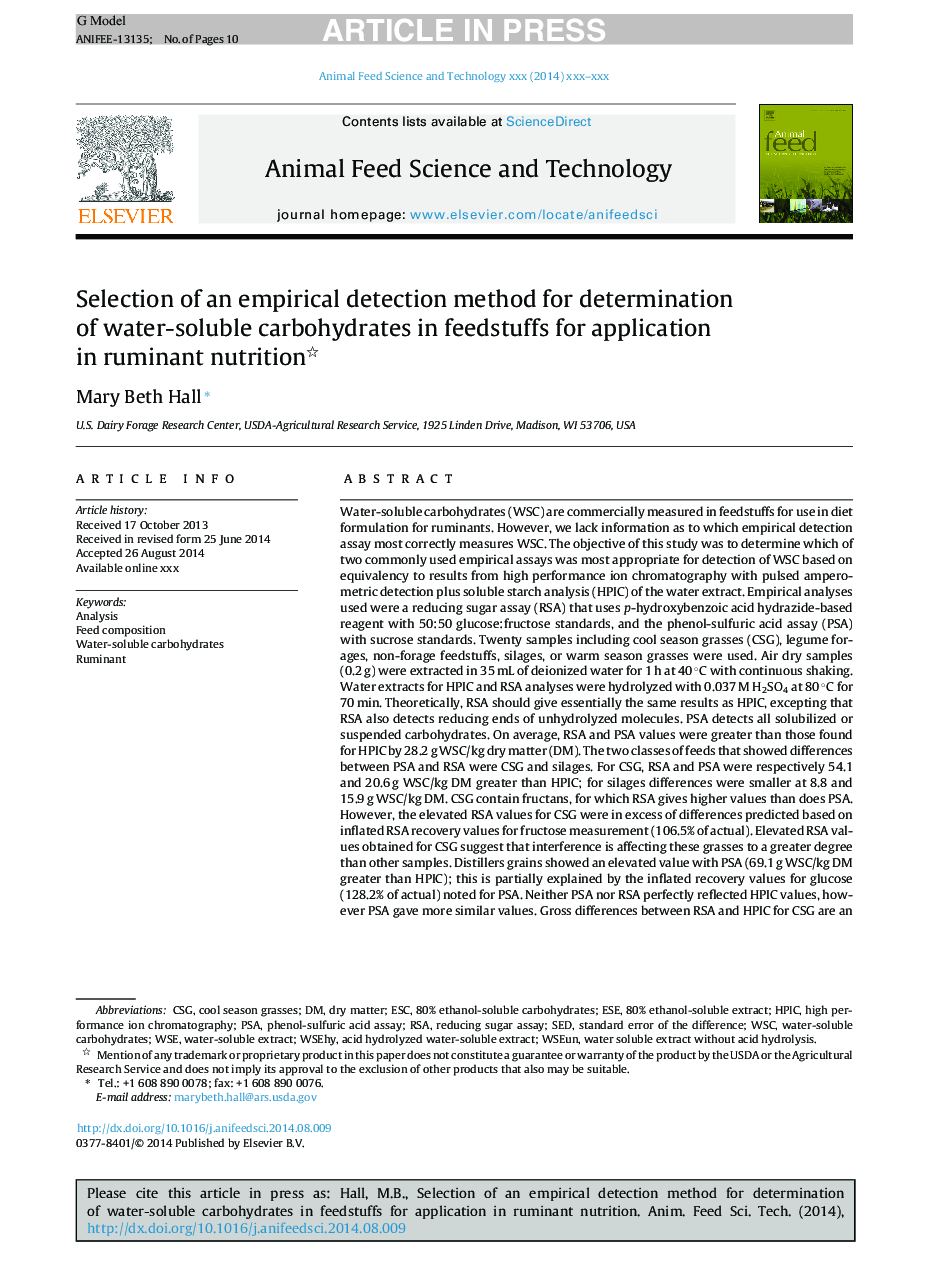| کد مقاله | کد نشریه | سال انتشار | مقاله انگلیسی | نسخه تمام متن |
|---|---|---|---|---|
| 8491455 | 1552387 | 2014 | 10 صفحه PDF | دانلود رایگان |
عنوان انگلیسی مقاله ISI
Selection of an empirical detection method for determination of water-soluble carbohydrates in feedstuffs for application in ruminant nutrition
ترجمه فارسی عنوان
انتخاب روش تشخیص تجربی برای تعیین کربوهیدرات های محلول در آب در خوراک برای کاربرد در تغذیه شایان ستایش
دانلود مقاله + سفارش ترجمه
دانلود مقاله ISI انگلیسی
رایگان برای ایرانیان
کلمات کلیدی
موضوعات مرتبط
علوم زیستی و بیوفناوری
علوم کشاورزی و بیولوژیک
علوم دامی و جانورشناسی
چکیده انگلیسی
Water-soluble carbohydrates (WSC) are commercially measured in feedstuffs for use in diet formulation for ruminants. However, we lack information as to which empirical detection assay most correctly measures WSC. The objective of this study was to determine which of two commonly used empirical assays was most appropriate for detection of WSC based on equivalency to results from high performance ion chromatography with pulsed amperometric detection plus soluble starch analysis (HPIC) of the water extract. Empirical analyses used were a reducing sugar assay (RSA) that uses p-hydroxybenzoic acid hydrazide-based reagent with 50:50 glucose:fructose standards, and the phenol-sulfuric acid assay (PSA) with sucrose standards. Twenty samples including cool season grasses (CSG), legume forages, non-forage feedstuffs, silages, or warm season grasses were used. Air dry samples (0.2 g) were extracted in 35 mL of deionized water for 1 h at 40 °C with continuous shaking. Water extracts for HPIC and RSA analyses were hydrolyzed with 0.037 M H2SO4 at 80 °C for 70 min. Theoretically, RSA should give essentially the same results as HPIC, excepting that RSA also detects reducing ends of unhydrolyzed molecules. PSA detects all solubilized or suspended carbohydrates. On average, RSA and PSA values were greater than those found for HPIC by 28.2 g WSC/kg dry matter (DM). The two classes of feeds that showed differences between PSA and RSA were CSG and silages. For CSG, RSA and PSA were respectively 54.1 and 20.6 g WSC/kg DM greater than HPIC; for silages differences were smaller at 8.8 and 15.9 g WSC/kg DM. CSG contain fructans, for which RSA gives higher values than does PSA. However, the elevated RSA values for CSG were in excess of differences predicted based on inflated RSA recovery values for fructose measurement (106.5% of actual). Elevated RSA values obtained for CSG suggest that interference is affecting these grasses to a greater degree than other samples. Distillers grains showed an elevated value with PSA (69.1 g WSC/kg DM greater than HPIC); this is partially explained by the inflated recovery values for glucose (128.2% of actual) noted for PSA. Neither PSA nor RSA perfectly reflected HPIC values, however PSA gave more similar values. Gross differences between RSA and HPIC for CSG are an issue, particularly without clear, resolvable basis for the discrepancy. Accordingly, PSA is preferred over RSA for detection of WSC. Selection of standards to more closely reflect WSC composition could further improve accuracy.
ناشر
Database: Elsevier - ScienceDirect (ساینس دایرکت)
Journal: Animal Feed Science and Technology - Volume 198, December 2014, Pages 28-37
Journal: Animal Feed Science and Technology - Volume 198, December 2014, Pages 28-37
نویسندگان
Mary Beth Hall,
